|
1990 - High winds and helicopters
By the beginning of 1990 Denham Aerodrome was a busy aviation business hub for flying training, engineering and business aviation, for both helicopters and aeroplanes. It had also become pretty much the aerodrome we know today, as can be seen in the photographs below, taken on a photographic sortie on 18 January, but there would be a number of developments during the new decade which would add to the facilities available for the wide range of resident companies.
|
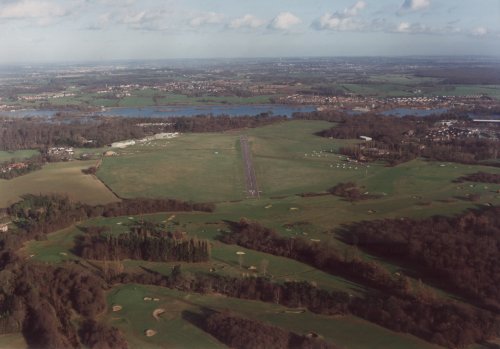
Denham Aerodrome as it was on 18 January.
|
|
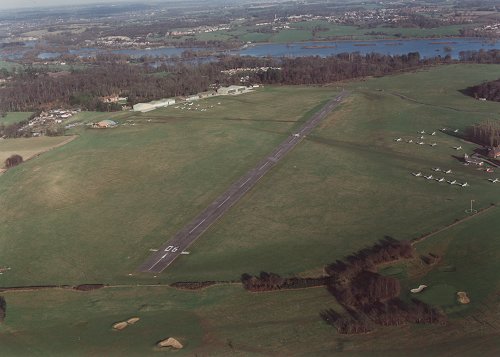
Denham Aerodrome seen from the south west.
|
|

Denham Aerodrome seen from the west.
|
|
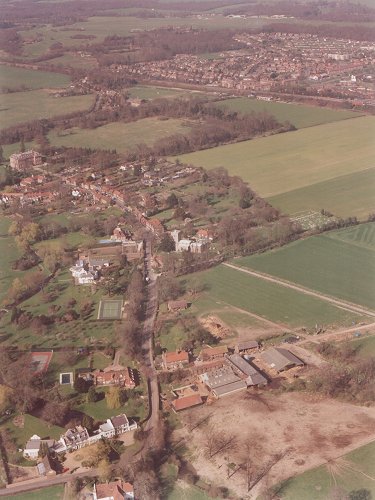
A view across Denham village towards the Aerodrome at the top shows how it was when this was taken on 18 January 1990.
|
Unfortunately the decade was to begin very badly for the aerodrome owners family. In 1985 they had acquired a Piper Cherokee Archer II, G-BIEP, for their training and to keep current as well as to visit other aerodromes around Europe and the UK. On the 25 January, a storm with winds reaching over 80 kts struck the south east of England. The aircraft had been tied down securely but the sheer force of he wind caused one of the metal tie down rings built into the wing to split. Since the take off speed of the aircraft was only about 50 knots, the wind was able to lift the now untethered wing and flip the Archer on its back. The damage to the cabin roof, fin, tailplane and wings was such that the aircraft was written off as irreperable, a sad loss.
|
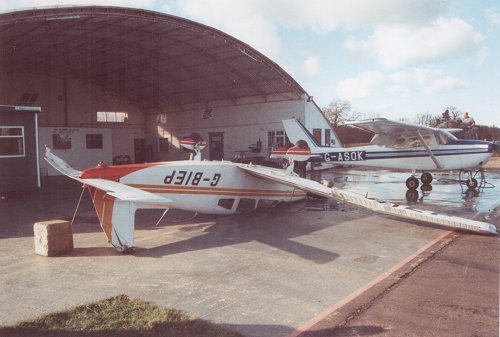
Piper Cherokee Archer II G-BIEP was blown over in the storm of 25 January.
|
|
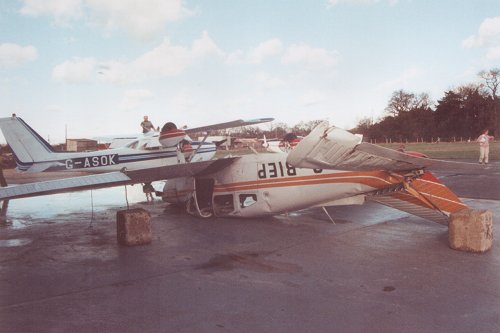
The damage to the wing, tailplane, fin and cabin roof was such that the aircraft was deemed irreperable.
|
|
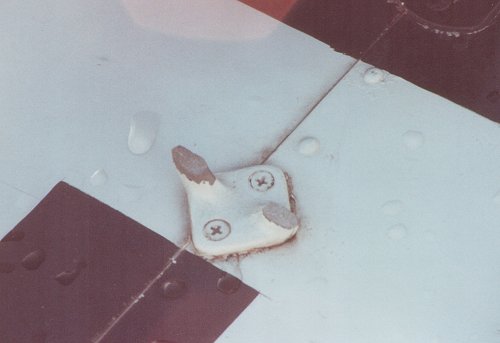
The winds were so strong that this metal tie down ring split, allowing the aircraft to be blown over.
|
A very unusual visitor came to Denham in the spring of 1990, one which required the addition of a temporary mooring mast on the west side of the airfield clear of the two runways and their approaches. The aircraft was a Colt GA-42 airship, G-ISPY, built by Thunder and Colt Ltd in 1989 and powered by a single Continental O-200 piston engine driving a pusher propeller on the rear of the control cabin. Owned and operated by the Airship and Balloon Company of Telford, Shropshire, the purpose of the aircaft at Denham was to fly advertising flights over London on behalf of InterCity rail services whose name and logo were emblazoned on the airship's envelope. As it was a two seat cockpit, Beatrice Paul was given a flight in this remarkable aircraft, its large cockpit glazing affording excellent photographic opportunities. One of the areas photograhed on its sorties was Heathrow airport, and it is interesting to note how much the airport has changed since 1990.
|
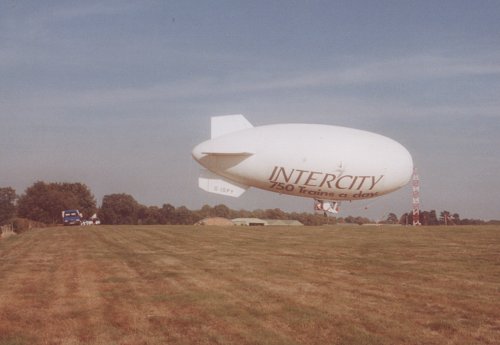
A temporary mooring mast was erected on the west side of the aerodrome to allow a Colt GA-42 airship to operate flights over London.
|
|
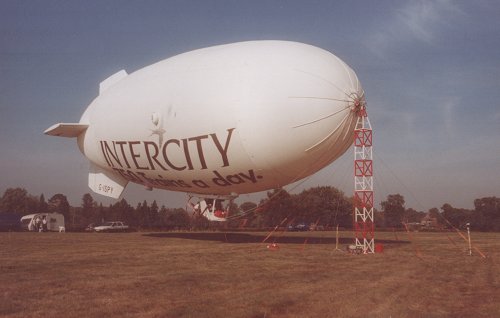
As well as the mast, the airship was accompanied by a variety of vehicles to house the crew and act as a planning room, as well as to supply helium gas.
|
|
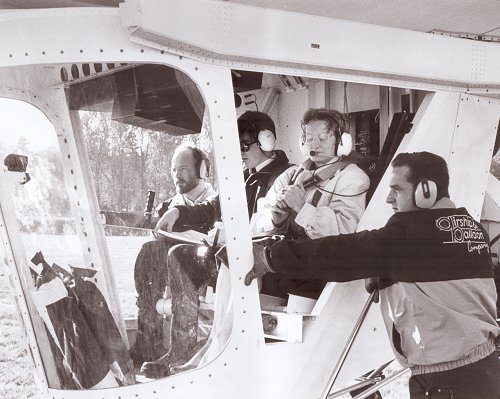
Beatrice Paul was given a flight and instruction in the airship while it was at Denham.
|
|
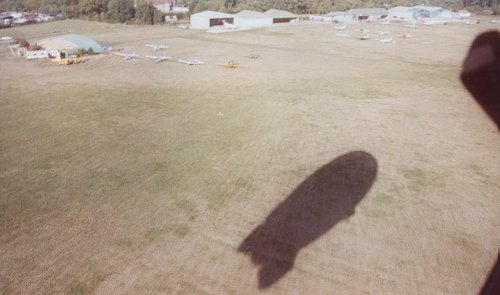
Despite being a single-engined two seat aircraft, the Colt airship casts a giant shadow.
|
|
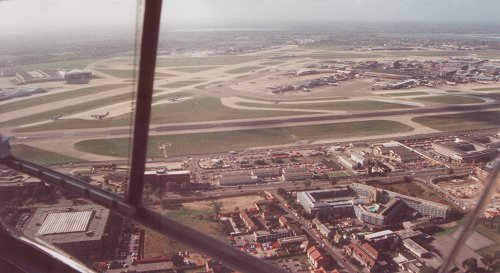
Looking south across Heathrow airport.
|
|
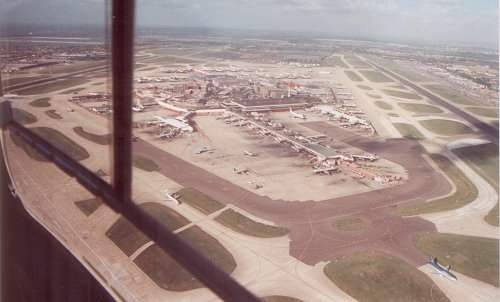
Looking west across Heathrow airport.
|
|
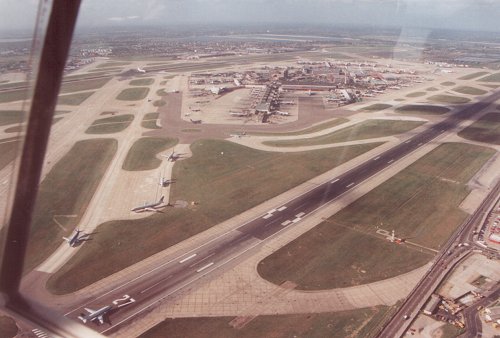
Looking south-west across Heathrow airport. Note the cross runway is still in use.
|
The regular helicopter visitors continued thoughout the year, including for such annual events as the Silverstone shuttle, taking passengers to the Grand Prix at the Northamptonshire race track.
|
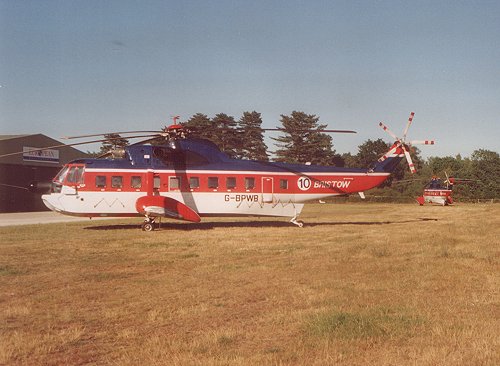
The very large Sikorsky S-61Ns of Bristows Helicopters were again regular visitors during Silverstone week.
|
1990 also saw an increase in the use of helicopters in a wide variety of roles as businesses and organisations became more familiar with the flexibility and adabtability of the aircraft to suit many uses. Electricity generation and distribution companies began to use helicopters extensively, not just to patrol the network to find faults and potential problems, but to deliver repair and maintenance crews to remote sites that would be difficult to reach by vehicle.
|
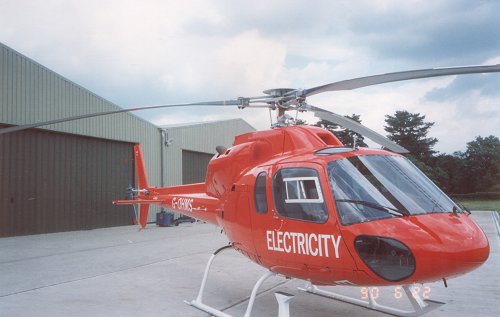
The South West Electricity Board had found helicopters so valuable in patrolling the electrical network on fault finding missions that their fleet increased to four aircraft with the purchase of G-OHMS from European Helicopters. This aircraft would return to Denham in a very different role in 2012.
|
British television news services began taking a leaf out of the their US compatriots' book with the introduction of the first UK news camera equipped helicopter for ITN. Aside from gyro stabilised cameras, G-OITN was also equipped with onboard record and replay systems for the camera operators and a microwave datalink to allow news footage to be downloaded to ground stations live. It was also fitted with a state of the art GPS navigation system with improved accuracy.
|
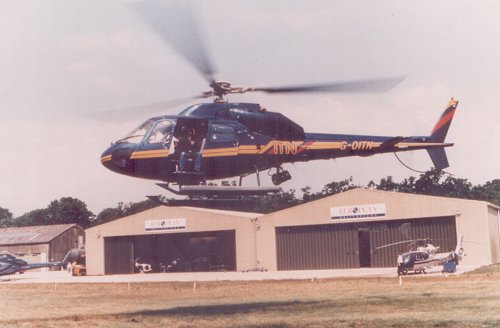
ITN became the first British television news company to operate a news camera equipped helicopter with the introduction of their Aerospatiale AS.355F1 Twin Squirrel, G-OITN. Modified and equipped by European Helicopters, this was a Denham resident until its retirement in 2005.
|
|
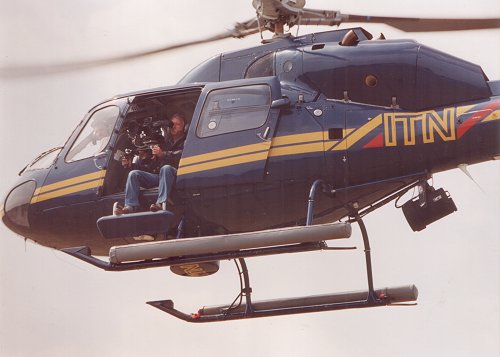
G-OITN's cabin was extensively modified to accomodate the gyro-stabilised camera, recording and playback equipment, a searchlight and a microwave link to allow live broadcast of film from the aircraft.
|
By now European Helicopters, based in Hangar I, were one of the largest helicopter maintenance and engineering modification companies in Europe, and a number of interesting aircraft were to be seen at their hangar throughout the year.
|
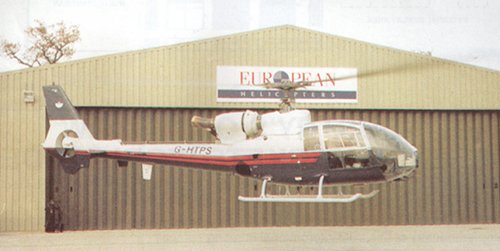
European Helicopters modified and overhaulled this Aerospatiale SA.341G Gazelle for the International Test Pilots School at Cranfield, where it was used to train test pilots and flight test engineers from all over the world.
|
|
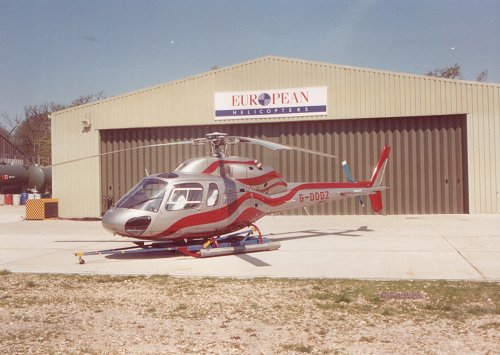
Magec Aviation took advantage of the maintenance facilities offered by European Helicopters by basing their Aerospatiale AS.355F2 Twin Squirrel G-DOOZ at Denham. This aircraft was to be owned by successive companies and not leave Denham until 2005.
|
Brian Lecomber's Firebird Aerobatics was to enjoy a very prosperous decade. This began in 1990 with the purchase of G-IIII, a Pitts S.2B two seat version of the aerobatic biplane, to supplement G-BIRD, the single seat Pitts S.1S. These were both painted in the colours of Microlease, a rapidly growing information technology management, support and leasing company that were to be Brian's biggest supporters over the next twenty years. The two seater was acquired to allow Microlease customers to experience aerobatics in the front seat of the aircraft, something many of their customers had asked about in the previous two years of seeing the single seat Pitts at displays and private events around the country.
|
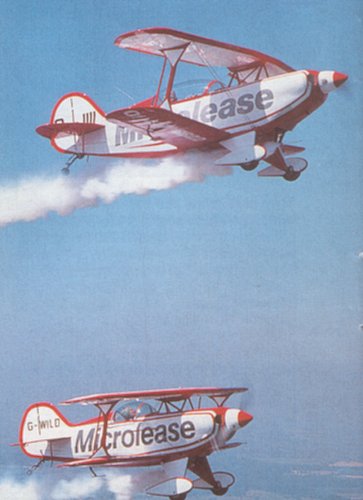
The single seat Pitts S.1S was joined by the more powerful two seat Pitts S.2B in 1990, both in the colours of IT management company Microlease.
|
|
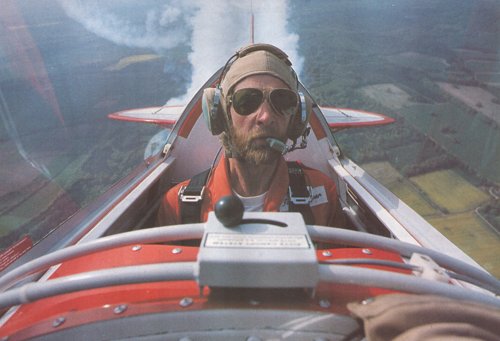
John Harper in the cockpit of the Pitts S.2B. The two seater enabled Firebird Aerobatics to offer sponsor customers a taste of aerobatic flight, something so successful that it was to be a feature of all Firebird sponsorship packages.
|
One unusual visitor to the aerodrome in 1990 was world famous photographer Lord Lichfield. The helicopters and aircraft at Denham made the ideal background for an advertising photo shoot he was conducting on behalf of Japanese motorcycle manufacturer Kawasaki.
|
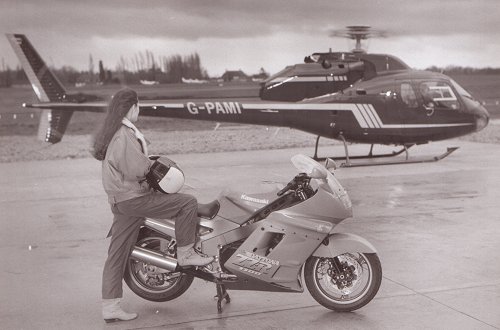
Lord Lichfield captured advertising images for Kawasaki motorcyles at Denham in 1990.
|
Denham had been twinned with Shark Bay in Australia for a number of years, but what was not so well known was that Shark Bay had its own Denham Airport. This was a very different prospect to the Buckinghamshire aerodrome, being set amongst the scrubland of Western Australia. Shark Bay is world renowned for its beaches and lagoons and is a World Heritage Site, so designated for its diverse ecological environments and rare species. The site now encompasses a range of parks and nature reserves, all of which can be seen from the air courtesy of Shark Bay Air Charter, based at Denham Airport.
|
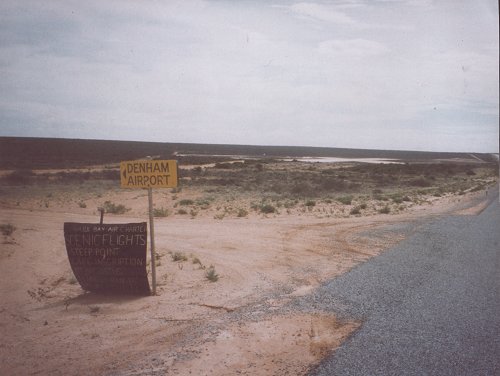
Denham Airport, Shark Bay, Western Australia is a very different environment to Buckinghamshire, but an ecologically important one and home to a range of parks and reserves.
|
The new decade began with a range of new and unusual aviation activities taking place at the aerodrome, but more was to follow, as will be related next.
|
|

